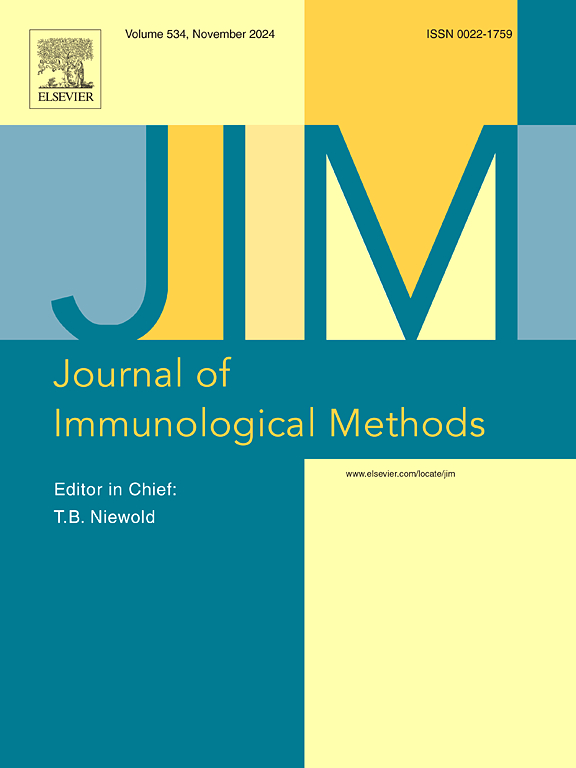Workflow improvement and financial gain after integration of high-throughput sample processing system with flow cytometer in a high-volume pathology laboratory: Results from a prospective comparative study using Lean principles
IF 1.6
4区 医学
Q4 BIOCHEMICAL RESEARCH METHODS
引用次数: 0
Abstract
Background
Highly efficient clinical laboratories are essential for monitoring many human illnesses. Ampath Laboratory Services, the largest pathology lab in South Africa, analyzes large numbers of peripheral blood samples for CD4 levels yearly.
Objective
To assess productivity and quality of a newer integrated automated solution, the BD FACSDuet™ Sample Preparation System/BD FACSLyric™ Flow Cytometer using conventional assessment methods and Lean concepts.
Materials and methods
This prospective study compared the performance of the BD FACS™ Sample Preparation Assistant [SPA] III and BD FACSCanto™ II Flow Cytometer with the newly introduced integrated system (BD FACSDuet™/BD FACSLyric™). They were validated for accuracy, precision, and external quality assessment. Process mapping and Lean assessment helped identify steps leading to waste. An economic model was developed to characterize workflow and economic impact associated with total daily hands-on time, processing time, and reworks.
Results
Strong linear correlation was present between both systems. Precision and accuracy studies revealed that all coefficient of variation (CV)% values were below 20% of allowable limits. External proficiency assessments were within limits. The fully automated workflow of BD FACSDuet™/BD FACSLyric™ permitted better consistency with significantly shorter processing time and batch processing and reduced operator interventions. Lean assessment identified defects with motion, over-processing, waiting, and non-utilized talent. Significant reductions in hands-on and total daily processing time that could increase daily specimen testing efficiency and fewer reworks were associated with the BD FACSDuet™/BD FACSLyric™. Lean improvements translated to significant economic savings associated with operator costs and unnecessary reagent consumption.
Conclusion
BD FACSDuet™/BD FACSLyric™ is an accurate, reliable, and cost-effective fully automated system for high-volume flow cytometry labs that perform T-cell enumeration using a single-platform and single-tube approach.
大容量病理实验室将高通量样本处理系统与流式细胞仪整合后的工作流程改进和财务收益:利用精益原则进行前瞻性比较研究的结果。
背景:高效的临床实验室对于监测许多人类疾病至关重要。Ampath Laboratory Services 是南非最大的病理实验室,每年都要对大量外周血样本进行 CD4 水平分析:采用传统评估方法和精益理念,评估较新的集成自动化解决方案(BD FACSDuet™ 样品制备系统/BD FACSLyric™ 流式细胞仪)的生产率和质量:这项前瞻性研究比较了 BD FACS™ Sample Preparation Assistant [SPA] III 和 BD FACSCanto™ II 流式细胞仪与新引进的集成系统(BD FACSDuet™/BD FACSLyric™)的性能。它们在准确度、精确度和外部质量评估方面都得到了验证。流程制图和精益评估有助于确定导致浪费的步骤。建立了一个经济模型来描述工作流程以及与每日总动手时间、处理时间和返工相关的经济影响:结果:两个系统之间存在很强的线性相关。精确度和准确度研究表明,所有变异系数 (CV) % 值均低于允许限度的 20%。外部能力评估也在允许范围内。BD FACSDuet™/BD FACSLyric™ 的全自动工作流程大大缩短了处理时间和批量处理时间,减少了操作员的干预,从而提高了一致性。精益评估发现了运动、过度处理、等待和未利用人才等缺陷。BD FACSDuet™/BD FACSLyric™ 显著减少了操作时间和每日总处理时间,从而提高了每日标本检测效率,减少了返工。精益生产的改进大大节省了操作成本和不必要的试剂消耗:BD FACSDuet™/BD FACSLyric™ 是一种准确、可靠、经济高效的全自动系统,适用于采用单平台、单试管方法进行 T 细胞计数的大批量流式细胞仪实验室。
本文章由计算机程序翻译,如有差异,请以英文原文为准。
求助全文
约1分钟内获得全文
求助全文
来源期刊
CiteScore
4.10
自引率
0.00%
发文量
120
审稿时长
3 months
期刊介绍:
The Journal of Immunological Methods is devoted to covering techniques for: (1) Quantitating and detecting antibodies and/or antigens. (2) Purifying immunoglobulins, lymphokines and other molecules of the immune system. (3) Isolating antigens and other substances important in immunological processes. (4) Labelling antigens and antibodies. (5) Localizing antigens and/or antibodies in tissues and cells. (6) Detecting, and fractionating immunocompetent cells. (7) Assaying for cellular immunity. (8) Documenting cell-cell interactions. (9) Initiating immunity and unresponsiveness. (10) Transplanting tissues. (11) Studying items closely related to immunity such as complement, reticuloendothelial system and others. (12) Molecular techniques for studying immune cells and their receptors. (13) Imaging of the immune system. (14) Methods for production or their fragments in eukaryotic and prokaryotic cells.
In addition the journal will publish articles on novel methods for analysing the organization, structure and expression of genes for immunologically important molecules such as immunoglobulins, T cell receptors and accessory molecules involved in antigen recognition, processing and presentation. Submitted full length manuscripts should describe new methods of broad applicability to immunology and not simply the application of an established method to a particular substance - although papers describing such applications may be considered for publication as a short Technical Note. Review articles will also be published by the Journal of Immunological Methods. In general these manuscripts are by solicitation however anyone interested in submitting a review can contact the Reviews Editor and provide an outline of the proposed review.

 求助内容:
求助内容: 应助结果提醒方式:
应助结果提醒方式:


